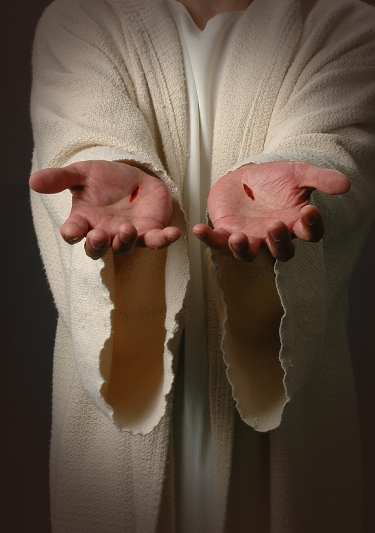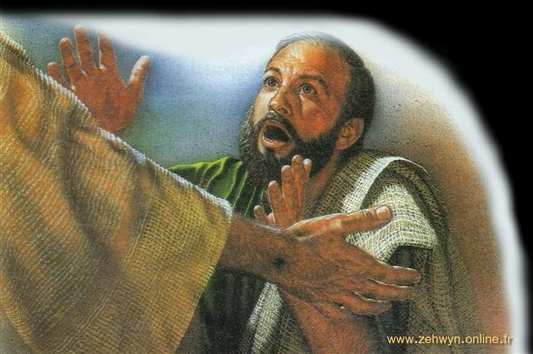 Doubting Thomas. What a moniker to go down in history with, to go down in religious history! I’ve always liked Thomas. Everyone wanted to believe their beloved Jesus had risen from the dead. Many needed less proof than some. But I would probably sooner be questioning my own mind than accept unproven the blessed miracle of resurrection. It goes against nature. It goes against experience. And it especially goes against reason.
Doubting Thomas. What a moniker to go down in history with, to go down in religious history! I’ve always liked Thomas. Everyone wanted to believe their beloved Jesus had risen from the dead. Many needed less proof than some. But I would probably sooner be questioning my own mind than accept unproven the blessed miracle of resurrection. It goes against nature. It goes against experience. And it especially goes against reason.
Imagine Thomas, singularly wishful but sorrowful, holding back from the rest of the joyous and celebrating apostles and disciples. He knew about life; maybe he was a bit older than the rest. You could hope for a loved one’s recovery from illness. You could hope for a long but gentle rain after a hot, dry period. You could humor a group of men and women who thought they had actually been given something they didn’t even know to hope for.
Thomas had loved Jesus. There, there is no doubt! In John 11, Jesus is delaying his departure to go to Bethany because he needs to perform a certain miracle. He and his disciples are talking at cross purposes. John 11:11-16:
“… Our friend Lazarus has fallen asleep; but I am going there to wake him up.”
His disciples replied, “Lord, if he sleeps, he will get better.” Jesus had been speaking of his death, but his disciples thought he meant natural sleep.
So then he told them plainly, “Lazarus is dead, and for your sake I am glad I was not there, so that you may believe. But let us go to him.”
Then Thomas . . . said to the rest of the disciples, “Let us also go, that we may die with him.”
The miracle of Lazarus being brought back to life after being placed in the tomb to decay was a seriously nature-defying event. The story unfolds with Martha’s amazing declaration that if Jesus had been there, Lazarus would have lived, but (John 11:22) “even now God will give you whatever you ask.” Martha’s belief is very strong.
Jesus seems so intent on bringing Lazarus back to life, it seems he forgot the grief and sorrow that accompanied allowing the man to die first. Then Mary’s great sorrow brings home to him this grief and suffering and Jesus realizes everyone is hurting: his closest friends and others who loved Lazarus.
John 11:33: “. . . he was deeply moved in spirit and troubled.”
John 11:35: “He wept.”
He wept, perhaps because in order to convince his listeners of the validity of his important message, he had to hurt them. He cared for them. He felt their sorrow and deep loss, and it surely pained him to tears.
So back to Thomas: he is present to witness all of this as well as the incredible miracle of Lazarus. What a terrible blow to his reason, his understanding, his Weltanschauung.
And all along, Jesus keeps talking about belief.
John 11:15: “. . . For your sake I am glad I was not there, so that you may believe.”
John 11:25-26: “Jesus said to [Martha], ‘I am the resurrection and the life. The one who believes in me will live, even though they die; and whoever lives by believing in me will never die. Do you believe this?’”
Martha’s answer is strongly affirmative. When he meets up with Mary, she repeats the admonishment of Martha, “If you had been here he would not have died” (John 11:32).
John 11:40: “Did I not tell you that if you believe, you will see the glory of God?”
John 11:41-42: “Then Jesus looked up and said, ‘Father, I thank you that you have heard me. I knew that you always hear me, but I said this for the benefit of the people standing here, that they may believe that you sent me.’”
And he calls Lazarus back from the dead. Later, in the course of time, occur the horrible events of Jesus’ death and the incredible story of his resurrection. The apostles had already once met with Jesus but Thomas hadn’t been there.
John 20:25: “…The other disciples told him, “We have seen the Lord!” But he said to them, “Unless I see the nail marks in his hands and put my finger where the nails were, and put my hand into his side, I will not believe.”
And so, guess what? John 20:26-29:
“Though the doors were locked, Jesus came and stood among them and said, ‘Peace be with you!’ Then he said to Thomas, ‘Put your finger here; see my hands. Reach out your hand and put it into my side. Stop doubting and believe.'”
Thomas’s understanding of life is being challenged by Jesus: Do I believe or no? If this is Jesus standing here, the world I grew up learning about, the one with clear natural laws, the ones that say life leads to death which enables more new life as the cycle goes on; life with the certainty of death. But here he is in the flesh!
“Thomas said to him, “My Lord and my God!”

God is above law and controls nature! Life has defeated death!
“Then Jesus told him, “Because you have seen me, you have believed;
blessed are those who have not seen and yet have believed.”
They will be blest in that they will be unshackled
from nature,
and rules,
and laws,
and a mind dominated by unwavering reason,
and death.
Life makes room for what love does, and what faith can nourish, and what God can do. Those who have not seen,
but believed, will not burden their lives with sorrow and confusion like you did,
dear Thomas, but will rejoice and celebrate with revived spirit
the gift of the Risen Son of God.
New International Version (NIV) Bible
Emphases are mine.
